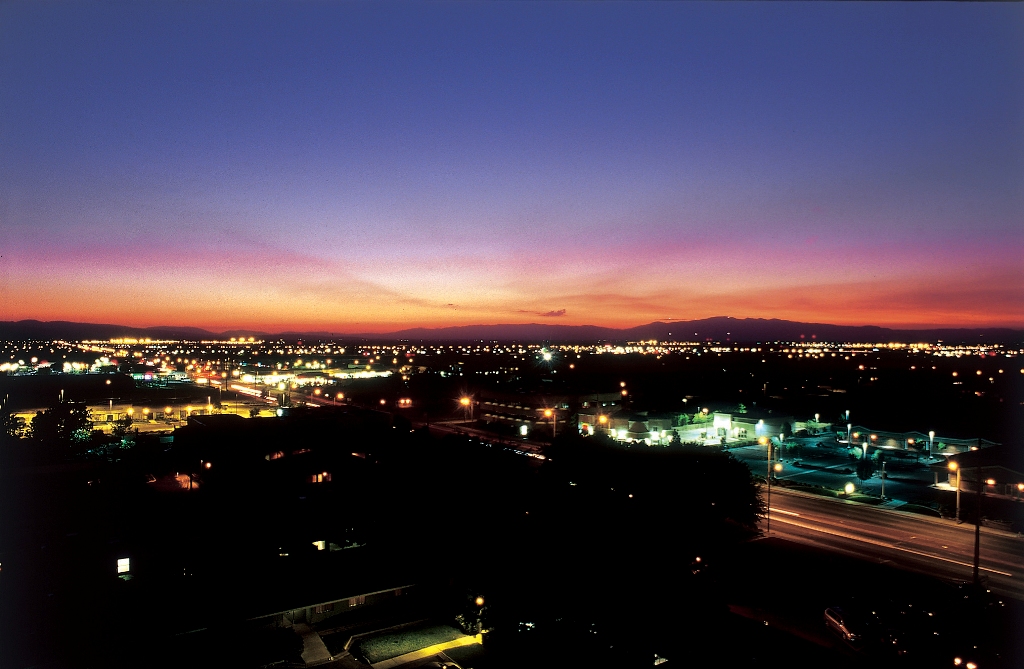Lancaster is a charter city in northern Los Angeles County, in the Antelope Valley of the western Mojave Desert in Southern California. Take a look below for 20 fun and amazing facts about Lancaster, California, United States.
1. As of the 2010 census it had a population of 156,633, and in 2020 the population was estimated at 173,516, making Lancaster the 153rd largest city in the United States and the 30th largest in California.
2. Lancaster is part of a twin city complex with its southern neighbor Palmdale, and together they are the principal cities within the Antelope Valley region.
3. Lancaster is located approximately 70 miles (110 km) north (via I-5 and SR 14) of downtown Los Angeles, and is near the Kern County line.
4. It is separated from the Los Angeles Basin by the San Gabriel Mountains to the south, and from Bakersfield and the San Joaquin Valley by the Tehachapi Mountains to the north.
5. The population of Lancaster has grown from 37,000 at the time of its incorporation in 1977 to over 157,000 as of 2019.
6. The area where Lancaster is now located, known as the Antelope Valley, was originally home to the Paiute Indians.
7. The Antelope Valley’s central geography initially served as the hub of a trade route for tribes trading between the California coast, the Central Valley, the Great Basin, and the pueblos of Arizona.
8. After statehood, the Antelope Valley again served as a geographic shortcut but for the Stockton-Los Angeles Road and the Butterfield Overland Mail, which had two nearby stops in Mud Spring and Neenach in the 1850s. However, Lancaster’s origins as a settlement start with the Southern Pacific Railroad, which replaced the stage coach routes.
9. The railroad built a station house, locomotive watering facility, section gang housing, and railroad track in the location of the town’s current center. In 1876 the Southern Pacific completed the line through the Antelope Valley, linking San Francisco and Los Angeles.
10. The origin of Lancaster’s name is unclear, attributed variously to the surname of a railroad station clerk, the moniker given by railroad officials, or the former Pennsylvania home (Lancaster, Pennsylvania) of unknown settlers.
11. Train service brought passengers through the water-stop-turned-community, which, with the help of promotional literature, attracted new settlers. The person credited with formally developing the town is Moses Langley Wicks, who in 1884 bought property from the railroad for $2.50 per acre, mapped out a town with streets and lots, and by September was advertising 160-acre tracts of land for $6 an acre.
12. The following year, the Lancaster News started publication, making it the first weekly newspaper in the Antelope Valley. By 1890, Lancaster was bustling and booming, and thanks to adequate rainfall, farmers planted and sold thousands of acres of wheat and barley.
13. The town was devastated by the decade-long drought that began in 1894, killing businesses and driving cattle north, though fortunes improved somewhat in the late-1890s following the nearby discoveries of gold and borax. The Tropico Gold Mine in Rosamond was briefly the largest goldmine in Southern California before its 1956 closure.
14. The Rio Tinto Borax Mine would later become the world’s largest borax mine, producing nearly half of the world’s supply of borates.
15. The construction of the Los Angeles Aqueduct, starting in 1908, brought growth to the local economy by housing the aqueduct workers and introducing a steady stream of water. The 1912 completion of Antelope Valley High School allowed students from the growing region to study locally instead of moving to distant cities, hosting the state’s first high school dormitory system.
16. The community began a steady growth spurt in the 1930s, starting with construction of Muroc Air Force Base (renamed to Edwards AFB), site of frequent flight tests, including the “breaking” of the sound barrier by Chuck Yeager in a Bell X-1A in 1947. From the 1980s through the end of the program, Edwards AFB hosted a limited number of landings of the Space Shuttle.
17. The development of Air Force Plant 42 in 1958, augmented in the 1960s by construction of Lockheed Aircraft’s Plant 10, created tens of thousands of jobs. High-wage employment hit its peak in the 1970s during the Lockheed L-1011 commercial wide body jetliner project, for which all assembly and some engineering and parts production were performed. 250 L-1011 aircraft were assembled and flown from this plant and airfield. Lancaster was an unincorporated community in Los Angeles County until 1977, when it was incorporated as a city, with Arnold Rodio serving as its first mayor.
18. Lancaster State Prison opened in 1993 and before that Los Angeles County hosted no prisons but accounted for forty percent of California’s state-prison inmates. “Most of Lancaster’s civic leaders and residents” opposed the building of the prison, and four inmates escaped from LAC in its first year of operation. Nevertheless, by 2000 a proposal to increase the proportion of maximum-security inmates received little criticism.
19. In 2005, Hyundai Motor Co. announced the grand opening of a 4,300-acre, $60 million “Proving Ground,” a state-of-the-art testing facility for cars and sports utility vehicles in nearby California City.
20. Lancaster is now home to major defense contractors such as Boeing, Northrop Grumman, Lockheed Martin, BAE Systems, and government agencies, such as the NASA Armstrong Flight Research Center, which are all active in design, testing, and manufacturing of a variety of military and commercial equipment. Notable projects assembled and/or designed there include the Space Shuttle orbiters, B-1 Lancer bomber, B-2 Spirit bomber, F-117 Nighthawk fighter, F-35 Joint Strike Fighter, and the Lockheed L-1011 TriStar, a wide body passenger jet aircraft. The region is also proximate to the Mojave Air & Space Port, which is famous as the base of operations for Virgin Galactic and Scaled Composites, the company that designed SpaceShipOne and won the X-Prize.




